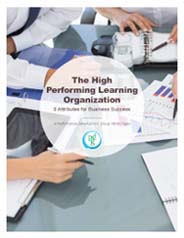How do you know if the design of your learning organization is accomplishing your business goals? In PDG's new white paper, “Creating the Learning Organization Structure,” we explore:
- How to structure a learning organization

- Benefits and risks of centralized and decentralized learning
- What a hybrid learning organization looks like
- The pros and cons of internal versus external capabilities
Here’s a preview of the white paper:
Overview
What is the right way to structure a learning organization? Should it be highly centralized, to allow for resource sharing and economies of scale? Highly decentralized, so the output is specific to the unique needs of different functions? Should it be a hybrid, incorporating the best of both worlds? Is there even a “right” way?
PDG has been fortunate to work with hundreds of learning organizations across multiple verticals, of varying size and complexity. This experience has allowed us to develop a series of considerations, trade-offs, and synergies that lead to best practices in learning organization design. In this white paper, we will provide a variety of situational examples, along with what we believe are factors that affect your decisions and what we believe to be best practice. Ultimately, the “best” design depends on your organization, your business, and your goals.
Perspectives on Learning Organization Design
Is there a “right” way to design a learning organization?
There is no absolute “right” way, no silver bullet. Each design has inherent strengths and drawbacks.
If there is not a “best” way, is there a “better” way?
Yes. Based on your organizations strategies and capabilities, there are design structures that are likely to work better than others. Structured analysis will help determine which alternatives are most likely to drive your goals. Issues you will need to evaluate include:
- Making necessary compromises: You usually can’t have the “best” of everything. Given strengths and weaknesses, compromises are often needed and the final design is likely to be a hybrid of the best options.
- Managing Tradeoffs: Decisions which way to go will need to be managed via the “levers” of leadership, decision-making, people, and processes.
To read more about creating the learning organization structure, download the free white paper!

 PDG recently published a new white paper called
PDG recently published a new white paper called 



